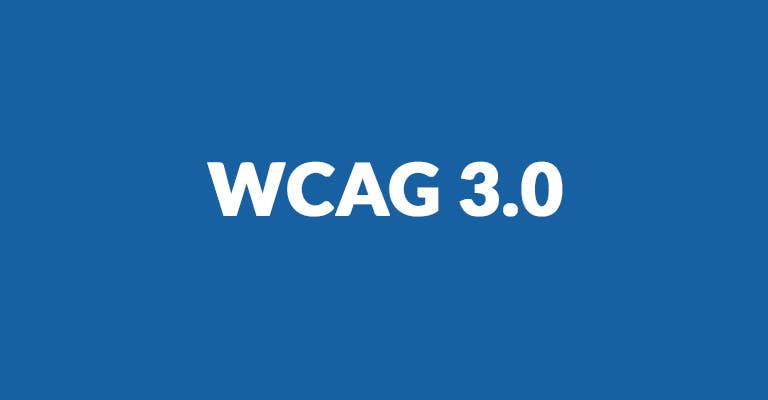Ensuring that digital content is accessible to all individuals, regardless of their abilities or disabilities, is not only a matter of inclusivity but also a legal requirement in many jurisdictions. The Web Content Accessibility Guidelines (WCAG) have long been the gold standard for making web content accessible, and the release of WCAG 3.0 introduces several important changes and updates. In this article, we'll explore what's new in WCAG 3.0 and what you need to know to create more accessible digital content.
Understanding WCAG: A Brief Overview
Before we delve into the changes in WCAG 3.0, let's briefly revisit the purpose and significance of these guidelines. WCAG, developed by the World Wide Web Consortium (W3C), offers a comprehensive framework for making web content more accessible to individuals with disabilities. The guidelines are structured around four key principles:
-
Perceivable: Ensure that all information and user interface components are presented in ways that can be perceived by all users, including those with various disabilities.
-
Operable: Make web content and user interface components navigable and operable by a diverse range of users, including those who may rely on assistive technologies.
-
Understandable: Ensure content is clear and easily comprehensible, enhancing the user's experience.
-
Robust: Make web content compatible with a variety of user agents and assistive technologies.
WCAG has historically been divided into three levels of conformance: A (the minimum level of accessibility), AA (a higher level of accessibility), and AAA (the highest level of accessibility). However, WCAG 3.0 introduces a more flexible approach to conformance, which is just one of the many significant changes.
Key Changes in WCAG 3.0
1. A New Scoring System
Perhaps the most significant change in WCAG 3.0 is the introduction of a scoring system. Instead of the traditional conformance levels (A, AA, AAA), WCAG 3.0 now employs a scoring system from 0 to 4. This system allows website owners and developers to assign a score to their content based on how well it adheres to the guidelines.
- Level 0: Content that does not meet any accessibility guidelines.
- Level 1: Content that is partially accessible but needs improvement.
- Level 2: Content that meets basic accessibility requirements.
- Level 3: Content that exceeds basic requirements and provides enhanced accessibility.
- Level 4: Exceptional accessibility, going above and beyond to ensure maximum inclusivity.
This new system provides a more nuanced way to evaluate and communicate the accessibility of web content. It acknowledges that accessibility is not a one-size-fits-all concept and encourages continual improvement.
2. Improved Focus on Mobile and Emerging Technologies
WCAG 3.0 places a greater emphasis on mobile accessibility and emerging technologies. With the rapid proliferation of mobile devices and evolving web technologies, it's essential to ensure that digital content remains accessible across various platforms and devices. The guidelines address issues related to responsive design, touch interfaces, and other considerations specific to mobile users.
3. User-Centric Approach
WCAG 3.0 shifts towards a more user-centric approach by acknowledging that accessibility is not solely the responsibility of web developers. It encourages content creators, designers, and authors to take an active role in making their content more accessible. This approach fosters a culture of inclusivity from the ground up, with everyone involved in the web content creation process playing their part.
4. Improved Integration with International Standards
WCAG 3.0 is designed to be more internationally harmonized by aligning with other global accessibility standards. This harmonization helps reduce inconsistencies and confusion in the accessibility landscape, making it easier for organizations and developers to comply with accessibility guidelines worldwide.
5. Enhanced Support for Cognitive Disabilities
The new guidelines provide additional support and recommendations for addressing the needs of individuals with cognitive disabilities. This is an important step forward, as cognitive accessibility has historically received less attention than other disability types.
What You Need to Know
As a web developer, designer, content creator, or website owner, it's essential to familiarize yourself with WCAG 3.0 and the changes it brings. Here are some key takeaways:
-
Familiarize Yourself with the Scoring System: Understand the new scoring system from 0 to 4 and use it to assess the accessibility of your web content. This will help you identify areas for improvement more precisely.
-
Consider Mobile and Emerging Technologies: Ensure that your web content is responsive and accessible on mobile devices and that it accounts for emerging technologies such as voice interfaces and virtual reality.
-
Embrace a User-Centric Approach: Encourage all stakeholders in the web content creation process to take accessibility seriously. Accessibility is a shared responsibility, and everyone should play a part.
-
Stay Informed About International Standards: Keep yourself updated on international accessibility standards and align your practices with them to ensure global compliance.
-
Prioritize Cognitive Accessibility: Pay special attention to the needs of users with cognitive disabilities, and make the necessary adjustments to your content to cater to this audience.
In conclusion, WCAG 3.0 represents a significant step forward in the world of web accessibility. It provides a more flexible and user-centric approach, better alignment with international standards, and improved support for various disability types. By understanding and implementing these guidelines, you can create web content that is more inclusive, user-friendly, and legally compliant. In a world where digital presence is essential, accessibility is not just a choice; it's a responsibility that we all share.
